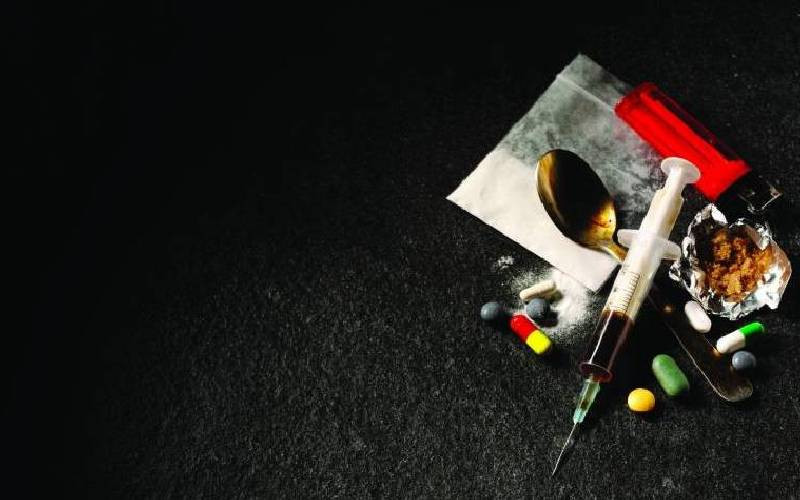By Kenneth Kwama
The Swine flu epidemic could mean healthy profits for two top drug companies.
With several people in the country worried about outbreaks of swine flu and over 25 confined in isolated wards with bouts of coughs, fever and chills, it’s hard to imagine a better time to offer the public a remedy.
That serendipity has not been lost on two of the biggest drug companies in the world, which have begun battling it out for market share, with high-tech drugs designed to combat the virus.
So far, GlaxoSmithKline (GSK) and Swiss drug maker, Roche have taken the lead with their drugs, Relenza and Tamiflu, respectively. Relenza was first introduced in August 1999 in the US.
According to Dr William Mwatu, the Medical and Regulatory Affairs Director at the local GlaxoSmithKline (GSK), the company has doubled the global production of its anti-flu remedy, Relenza from 15 million doses to 30 million doses per month to cope with stockpiling of the drugs, being spearheaded by the World Health Organisation (WHO).
"The initiative enables us to produce and store stockpiles for developing countries, including Kenya at a significantly reduced price. The WHO will coordinate efforts to ship the stockpile to countries when an influenza pandemic is announced, or in the event of a public health emergency," says Mwatu.
Mwatu says GSK has adopted a double-pronged approach to fight the flu, and is also working on a vaccine, which it hopes to unveil by September this year.
"A vaccine is the best approach because it will guarantee better protection against the virus. We are working on one and the progress is good," he says.
Better Protection
Both drugs are what are termed neuraminidase inhibitors, meaning that they inhibit an enzyme that is necessary for the flue virus to replicate in the body.
The difference between the drugs is that while Relenza is taken by an inhaler directly into the lungs, Tamiflu is available as a convenient capsule.
Both medicines have to be taken within 48 hours of the onset of flu symptoms to be effective, and are said by the companies to cut the duration of the illness by up to 40 per cent, as well as easing the symptoms.
Although both drugs have done well during ordinary flu seasons in the past, the swine flue epidemic has provided an unexpected publicity bonanza-crucial in the markets, where the flue has caused panic and is promising to turn the seasonal therapy into a blockbuster.
With the number of people with the flu confirmed at over 20, Kenya is one of the worst affected countries in the continent and there were fears the country would lose a lot due to swine flue-related fears, especially during tourism’s peek months, before the hush fell on discussions.
Stay informed. Subscribe to our newsletter
In Kenya, Tamiflu is the better known of the two solutions when it comes to swine flue, but Relenza has also been a first line treatment, especially in the developed world.
Economic impact
The deadly respiratory illness may have started in Mexico, but its impact-economic and otherwise, has been rippling around the world, spreading faster than the virus that causes it. It has rocked markets in South America, ruined the once-vibrant tourist trade of Mexico and neighbouring countries, bankrupted the country’s domestic airliners and spread panic through far-flung countries like Kenya.
A source within the pharmaceutical industry said sales of both drugs, which can only be sold after a prescription, had skyrocketed all over the world.
The country has up to 50,000 doses of Tamiflu, which retails at about Sh2,200 per dose. This translates into Sh110 million stockpiles worth of the vital drug.
Although it is too early to state the extent the flu could go, the drug companies have already won the publicity battle. If the flue keeps spreading as it has, the two drug makers should have no trouble making their products into household names.
 The Standard Group Plc is a
multi-media organization with investments in media platforms spanning newspaper
print operations, television, radio broadcasting, digital and online services. The
Standard Group is recognized as a leading multi-media house in Kenya with a key
influence in matters of national and international interest.
The Standard Group Plc is a
multi-media organization with investments in media platforms spanning newspaper
print operations, television, radio broadcasting, digital and online services. The
Standard Group is recognized as a leading multi-media house in Kenya with a key
influence in matters of national and international interest.
 The Standard Group Plc is a
multi-media organization with investments in media platforms spanning newspaper
print operations, television, radio broadcasting, digital and online services. The
Standard Group is recognized as a leading multi-media house in Kenya with a key
influence in matters of national and international interest.
The Standard Group Plc is a
multi-media organization with investments in media platforms spanning newspaper
print operations, television, radio broadcasting, digital and online services. The
Standard Group is recognized as a leading multi-media house in Kenya with a key
influence in matters of national and international interest.









